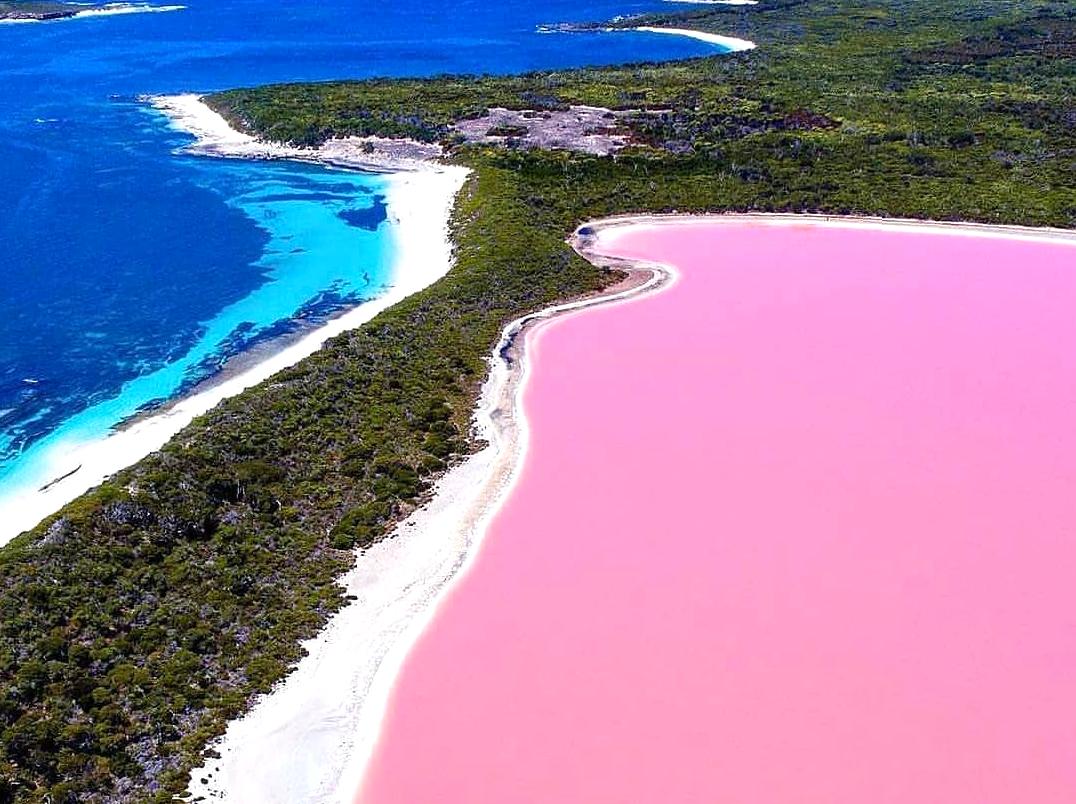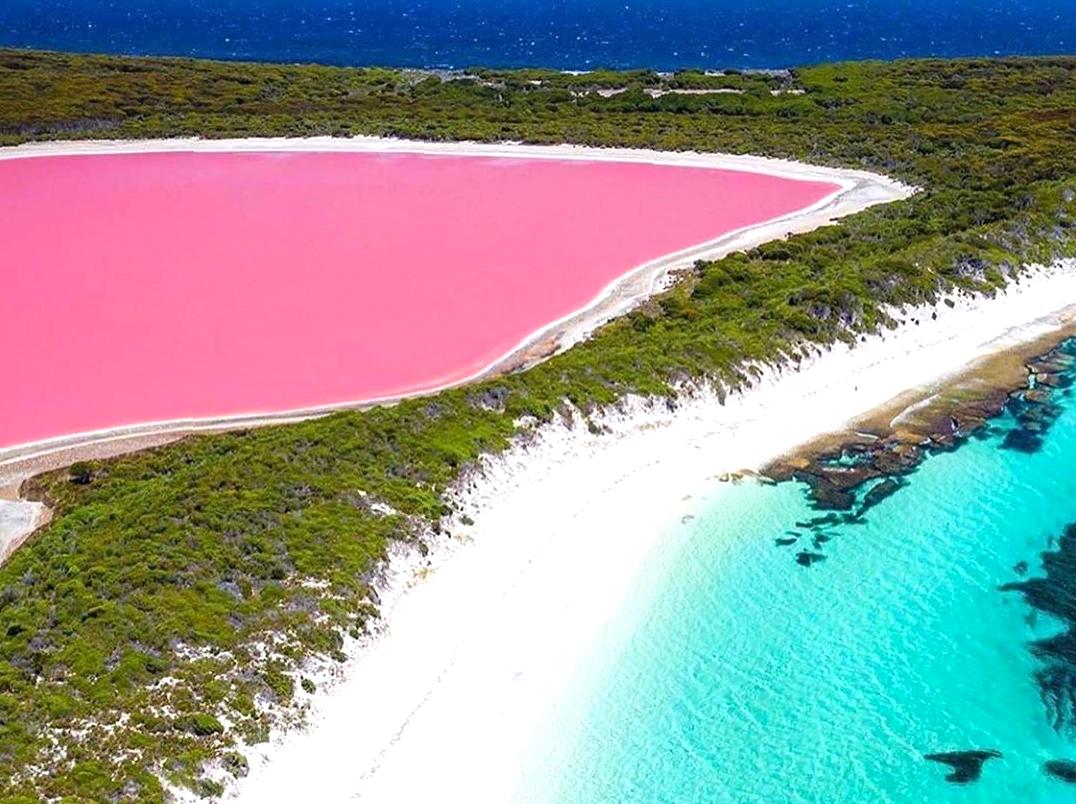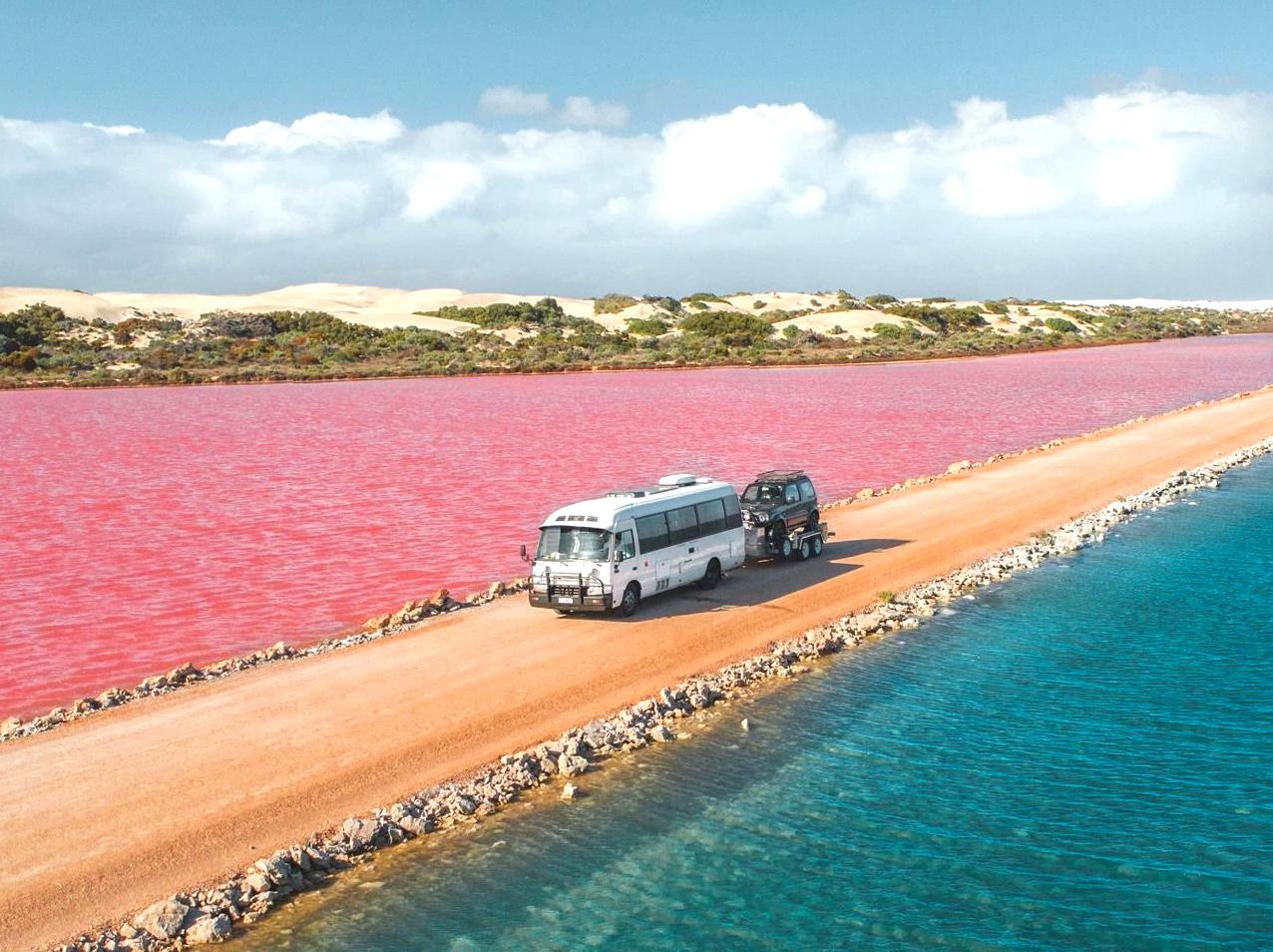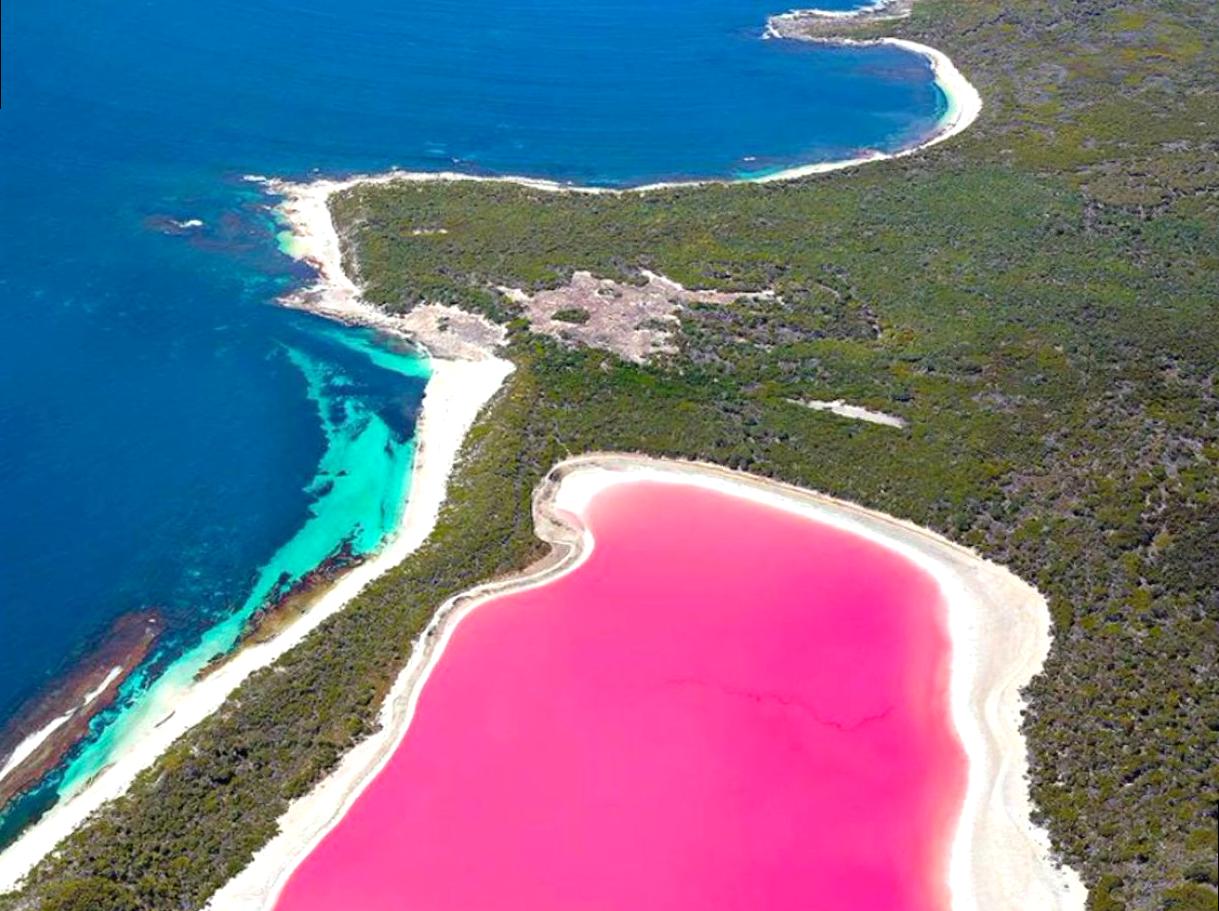Pink Lake, Australia
Pink Lake, located in Western Australia, is a stunning natural wonder renowned for its vibrant pink-hued waters. This captivating phenomenon occurs due to the high salinity levels in the lake, which fosters the growth of salt-loving microorganisms known as halobacteria. Aside from its striking colors, Pink Lake is a breathtaking destination for nature lovers, photographers, and travelers seeking unique experiences. This article will delve into the geological and ecological aspects of Pink Lake, its attractions, and practical information for visitors.

Understanding the Science Behind Pink Lake
The pink color of Pink Lake stems primarily from the presence of beta-carotene and other pigments produced by certain microorganisms. These microorganisms thrive in environments with high salt concentrations, which leads to the accumulation of pigments that create the lake’s distinctive pink hue. During the warmer months, when evaporation rates are high, the salinity of the water increases, enhancing the brightness of the pink color. Interestingly, the intensity of the pink shade can vary depending on the time of year, weather conditions, and the concentration of algae present, making each visit a unique experience. Many visitors are astonished to discover that this intense pinkness isn’t a fixed feature; instead, it dances around shades from soft pastels to vibrant fuchsias. Apart from the vibrant color, Pink Lake is also significant for its mineral-rich waters, often associated with health benefits and therapeutic uses.

Why Visit Pink Lake?
Pink Lake is not just a feast for the eyes; it serves as a sanctuary for a diverse array of flora and fauna. The surrounding area is home to various bird species, including flamingos and other migratory birds, making it a paradise for birdwatchers. The lake’s unique ecosystem also contributes to its standing as an important research site for scientists studying saline environments. Aside from the ecological importance, Pink Lake offers various recreational activities, including kayaking, photography, and picnicking with picturesque views. The stunning backdrop of pink waters against the blue sky provides photographers with endless opportunities to capture breathtaking landscapes. Whether you are a nature enthusiast, a photographer, or simply looking for a unique experience, Pink Lake has something for everyone.
Nearby Attractions

Visiting Pink Lake also provides access to various nearby attractions that further enhance the experience. Some notable sites include:
-
- Lake Hillier: Another pink lake located on Middle Island, Lake Hillier is famous for its bright pink color and is often deemed one of the most photographed lakes in Australia.
- Abrolhos Islands: A captivating archipelago home to stunning coral reefs, these islands offer excellent snorkeling and diving opportunities.
- Kalbarri National Park: Just a short drive away, this national park boasts stunning cliffs, beautiful gorges, and a rich variety of hiking trails.
- Shark Bay: A UNESCO World Heritage site known for its marine life, including dolphins and dugongs, Shark Bay is an ideal destination for those interested in marine ecology.
Each of these sites complements a visit to Pink Lake, offering a broad spectrum of natural beauty and adventure. Whether you choose to hike through gorges or explore vibrant marine life, the surroundings of Pink Lake are a treasure trove of experiences.
Visiting Tips
Planning a trip to Pink Lake requires a bit of preparation to make the most of your visit. Here are some practical tips to ensure an enjoyable experience:
- Best Time to Visit: The optimal time to witness the lake’s vibrant color is during the warmer months, from late spring to early autumn (November to March).
- Stay Hydrated: Given the often high temperatures in the region, always carry sufficient water and sun protection while exploring.
- Respect the Environment: Appreciate the natural beauty of the lake but refrain from disturbing the delicate ecosystem and wildlife.
- Photography: Bring a good camera to capture the beauty, and consider visiting during golden hour for stunning lighting.
- Accommodation: Prepare your lodging in advance, as the area may have limited options, especially during peak seasons.
By keeping these tips in mind, you’ll be fully equipped to enjoy your adventure at Pink Lake and make lasting memories.

Conclusion
Pink Lake in Australia is a mesmerizing site defined by its striking pink waters and diverse ecosystems. The combination of natural beauty, scientific intrigue, and recreational activities makes it a must-visit destination for nature lovers and adventure seekers alike. Whether you’re exploring the vibrant colors of the lake, encountering unique wildlife, or visiting nearby attractions, Pink Lake offers an unforgettable experience that is rich in wonder and beauty. Plan your visit today and immerse yourself in the unique charm of this natural marvel.
FAQs About Pink Lake
The pink color is primarily due to the presence of beta-carotene in the halobacteria that thrive in the salty waters of the lake.
2. Is it safe to swim in Pink Lake?
While swimming is not generally recommended due to the high salinity and potential for irritants, visitors can enjoy the view and relax on the lakeside.
3. When is the best time to visit Pink Lake?
The best time to visit is from late spring to early autumn (November to March) when the colors are most vibrant.
4. Are there camping facilities near Pink Lake?
There are limited camping options nearby, so it’s advisable to book accommodations in advance or explore local camping spots within parks.
5. Can I access Pink Lake with public transport?
Public transport options are limited, so renting a vehicle or joining a tour group is the best way to reach Pink Lake and explore the surrounding areas.
